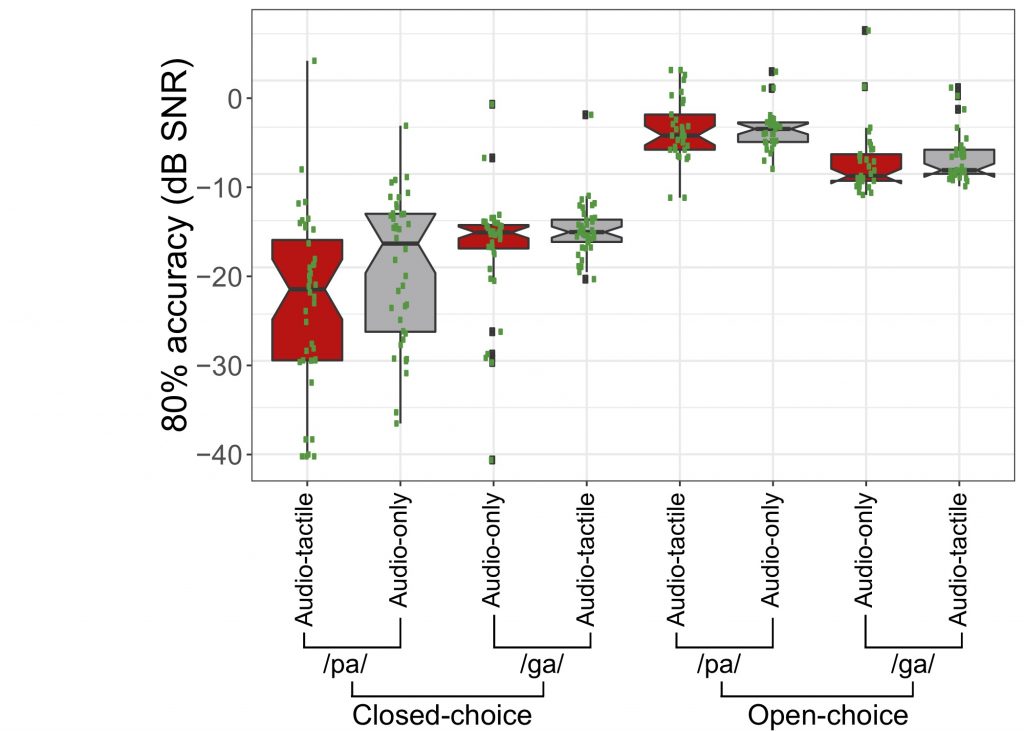
Jilcy Madappallimattam, Catherine Theys and I recently published an article demonstrating that aero-tactile stimuli does not enhance speech perception during open-choice experiments the way it does during two-way forced-choice experiments.
Abstract
Integration of auditory and aero-tactile information during speech perception has been documented during two-way closed-choice syllable classification tasks (Gick and Derrick, 2009), but not during an open-choice task using continuous speech perception (Derrick et al., 2016). This study was designed to compare audio-tactile integration during open-choice perception of individual syllables. In addition, this study aimed to compare the effects of place and manner of articulation. Thirty-four untrained participants identified syllables in both auditory-only and audio-tactile conditions in an open-choice paradigm. In addition, forty participants performed a closed-choice perception experiment to allow direct comparison between these two response-type paradigms. Adaptive staircases, as noted by Watson (1983). Were used to identify the signal-to-noise ratio for identification accuracy thresholds. The results showed no significant effect of air flow on syllable identification accuracy during the open-choice task, but found a bias towards voiceless identification of labials, and towards voiced identification of velars. Comparison of the open-choice results to those of the closed-choice task show a significant difference between both response types, with audio-tactile integration shown in the closed-choice task, but not in the open-choice task. These results suggest that aero-tactile enhancement of speech perception is dependent on response type demands.
Derrick, D., O’Beirne, G. A., De Rybel, T., Hay, J., and Fiasson, R. (2016). “Effects of aero-tactile stimuli on continuous speech perception,” Journal of the Acoustical Society of America, 140(4), 3225.
Gick, B., and Derrick, D. (2009). “Aero-tactile integration in speech perception,” Nature 462, 502–504.
Watson, A. B. (1983). “QUEST: A Bayesian adaptive psychometric method,” Perceptual Psychophysics, 33(2), 113–120.